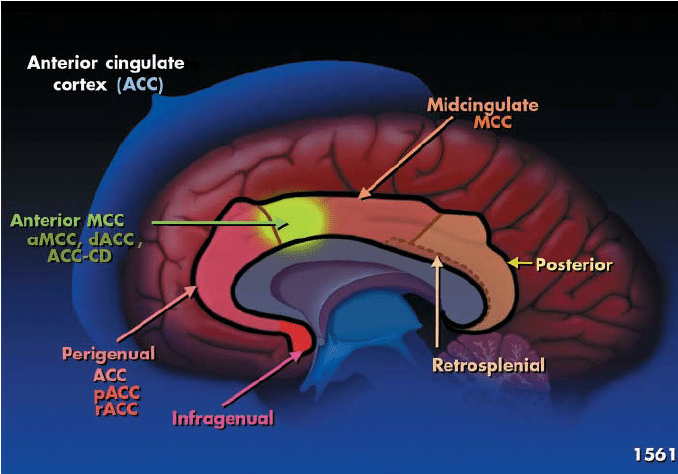Your Brain is Equipped To Deal With Fear

In 2013–when I was diagnosed with cerebellar atrophy–one of the first phone calls I made was to a close friend who is a biomedical engineer. He was studying in Europe at the time and used a lot of big words that had not yet ferried across the Atlantic Ocean.
However, one thing he did say was the human brain was extremely plastic.
“Plastic? Like Tupperware? “
“The brain is a neuroplastic organ. Meaning, despite damage, the brain can adapt, repair, and rewire itself. Like an advanced form of Tupperware. It’s pretty amazing.”
Selfishly, I’ve ignored the other brain areas and written a lot about the cerebellum. It’s the cauliflower head that hangs at the bottom of the brain. The cerebellum, often called “the little brain” controls coordination, balance, vision, motor skills, swallowing, and speech. Though they tend to manifest slowly, cerebellar diseases rot the cauliflower and compromise all of its subtle control.
Control.
I’ve spent time this week walking Maggie May thinking about control. When your diagnosed with an incurable disease or if your walloped with difficult news–life suddenly spins out of control.
And while life is spinning, fear gains strength and momentum as your head becomes dizzy and you’re convinced you will never regain control again and you’re doomed to spend your life like forgotten Tupperware tucked in the back of the fridge.
I recently learned about another part of the brain. The part that’s responsible for how we face fear and how we–when life is out of control–we can regain control of our lives.
It’s called the anterior mid-cingulate cortex (aMCC) and it’s amazing and yes, like Tupperware it’s plastic.

https://www.researchgate.net/figure/Structure-of-the-cingulate-cortex-The-anterior-region-of-the-mid-cingulate-cortex-MCC_fig1_7905047
Located in the center of the brain, new research indicates this hub is involved in autonomic processing, receiving signals from the body, executive function, motor planning, and sensory integration. The aMCC receives the information necessary to perform physical and cognitive tasks. Engaging this area helps to face fears and maintain a high level of emotional control. Research also proves the aMCC can regress and weaken if it’s not maintained and used.
So how do you maintain and strengthen an area nestled in the middle of your brain?
Science suggests that–not for ego trips or trophies or social media fame but for brain health–we do hard things.
That we engage in physical and mental “micro challenges.” Like going on a long walk or learning a new skill or doing one more set of push-ups. Simple “micro challenges” flex the aMCC so we become emotionally stronger and less afraid to do things like hosting a podblog–maybe the best podblog in the world–even if a brain disease has affected your voice and you’re terribly self-conscious about the way you now talk.)
If we are committed to “Do More in 24” and embracing Fear(less) February then we must be willing to engage the aMCC like a muscle. Strengthen it. Condition it. So we become better equipped to overcome fear.
And so our ability to overcome fear is not a matter of passively wishing or hoping but rather a matter of actively exercising our aMCC with voluntary challenges that force us to discover the untapped strength inside of us.
However, if we become complacent–we will grow weak and fear will dictate our lives.
Research also suggests the aMCC could be altered with sufficient behavioral training and may be better equipped than other brain regions to reshape its connectivity in response to learning.
When leveled with difficult or life altering news, it’s easy to forget how wonderfully resilient humans are. Complex organisms who crossed the Atlantic Ocean, invented Tupperware, designed and hosted podblogs, and who have the innate cranial capacity to adapt, repair, and regain control over ourselves.
Be well,
Jay
One Line, One Love with Author and Karen DeBonis–Episode #5: Honesty Builds Trust
If you haven’t heard yet… my friend Gail Boenning and I recently launched a podblog called, One Line, One Love.
OLOL is a unique listening and reading experience that will inspire everyday writers, who dream of writing, to pick up their pens and write one line at a time.
This podblog format (a hybrid of a podcast and blog) is for everyday writers who–like me–often need a creative boost, a scrap of encouragement, and practical advice to unleash the writer within. Each episode consists of five wide-ranging, writer-focused questions and a weekly writing prompt.
Please check it out! And please share with any writer friends or anyone in your life who has ever considered picking up the pen.
Amazon Order Link!
Ordinary Hero is now available in hardback and available, upon request, in local bookstores or libraries, even if your local bookstore or library is in Peru.

~~
Warm greetings to everyone who found me on the University of Pennsylvania’s Ataxia Clinic’s website! Thanks for stopping by. I have ataxia and though I’m not a doctor, I hope my words comfort, encourage, empower, and serve as good company on your journey.
~~
February Book Promos for You:
Are looking for inspiration? Are you searching for a better version of yourself?
This month I joined literary forces with some best-selling authors in an awesome book promotions. Click the link below:
Valentine’s Month is for Books

~~
Jay Armstrong is a speaker and an award-winning author. Despite being diagnosed with a rare neurological disease, that impairs his movement, balance, eyesight, and speech–Jay presses on. The leader of the Philadelphia Ataxia Support Group, he hopes to help you find joy, peace, and meaning in life.








